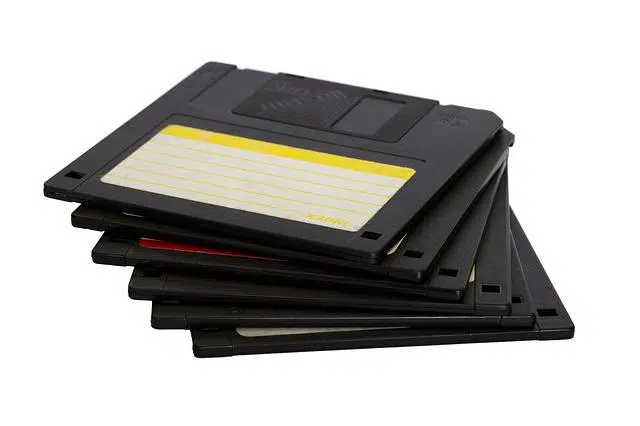
A floppy disk allows the storage of digital data.
An element that allows storing digital data is called a floppy disk . Also known as a diskette , flexible disk or floppy disk , it consists of a magnetic disk protected by a rectangular or square plastic cover.
Decades ago, floppy disks were the most used storage medium in computers . They were not only used to store information (office documents, photographs, software, etc.), but also to move it from one computer to another.
In this framework, computers used to have a floppy disk drive: a unit that allowed floppy disks to be written (recorded) and read. Therefore, a person could insert a floppy disk into the floppy drive and copy documents that were saved on the hard drive ( hard drive ). This floppy disk could then be moved to other computers, as long as they were equipped with a corresponding floppy disk drive.
Types of floppy disk
5 ¼-inch floppy disks were the first floppy disks to become mainstream. These floppy disks had a storage capacity of 1.2 MB .
Over time , 3 ½-inch floppy disks emerged, smaller in terms of physical size but with greater storage capacity: 1.44 MB .
One of the most striking features of floppy disks is that they have a security mechanism that allows the user to protect the content against accidental rewriting or deletion. It is not a tamper-proof or password-dependent technique; On the contrary, on one of the sides of the disk there is a small latch that can move in two directions, one to allow writing and the other to prohibit it. This is simply useful for the user themselves and for trusted people, but has no validity in the event of malicious use.

Due to technological advances, floppy disks lost popularity.
Loss of popularity
Several reasons meant that, over the years, floppy disks fell into disuse. The main one: its low capacity compared to that offered by more advanced technologies. CD-ROMs , where up to 700 MB of information can be stored, soon surpassed them. Then other options were added, such as cloud storage and USB drives .
Floppy disks, on the other hand, used to be easily damaged, either by the proximity of an external magnetic field or by the accumulation of dirt. The storage media that emerged later are generally more resistant .
Different denominations of floppy disks
One of the peculiarities of floppy disks that has no relation to its technology is that not all Spanish-speaking people called it the same way, largely because it is a term of foreign origin that was not used transliterated in the same way. in all regions.
For example, there were those who called them diskettes , a term pronounced /diskets/, but also those who called them "floppy disks" or, simply, "disks."
Its current use
As with other technological inventions, such as video game consoles and older computers, not everyone has forgotten the existence of floppy disks, but, on the contrary, there are many people who still continue to use them for reasons of nostalgia . Since many of the classic programs and games were stored on this medium, collectors cannot resist using them as they were marketed in their time.
Needless to say, if at the time it was difficult to keep a floppy disk in good condition and safe from magnetic fields, its care today can be especially difficult since its original disadvantages are compounded by the fact that they were manufactured several decades ago. . However, this does not stop " retro " lovers, and that is why the floppy disk lives on in thousands of shelves and drawers, along with one- and two-button mice, with dot matrix printers and tube monitors.
